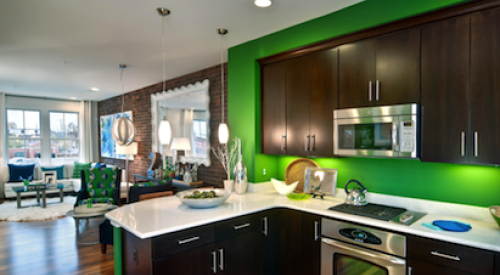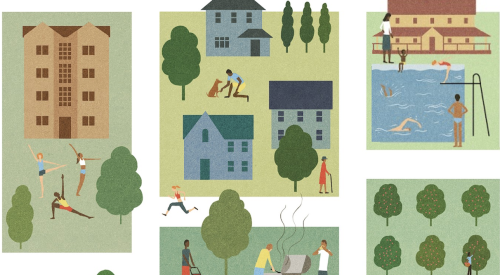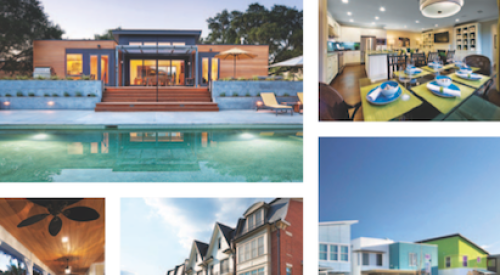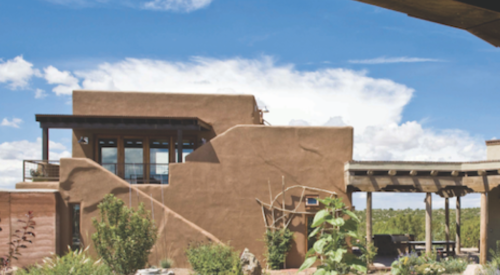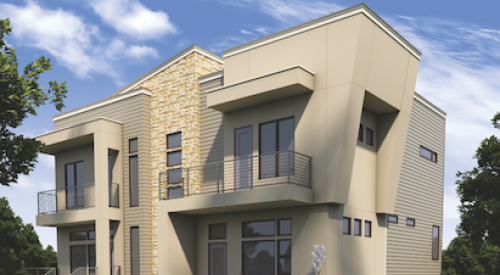|
|
|
|
|
|
In Silicon Valley's heyday 2 1/2 years ago, when high-tech companies were turning 20- and 30-somethings into millionaires, Centex Homes, Lennar Homes and Shea Homes got together to buy one of the sweetest pieces of property the area had to offer. An infill site in Santa Clara, Calif., that was once a 225-acre hospital campus is now home to the master-planned community Rivermark.
Opportunities
The site presented a tremendous opportunity, says Alex Barry, marketing director for Rivermark and a forward planner with Centex, which was the managing partner. Rather than fight over the same prime real estate, the three companies bought 150 of Rivermark's acres together - common in California and other land-scarce markets to help spread out cost and risk.
The builders avoid competing head to head in Rivermark because each builds two of the six for-sale product types - four single-family and two townhome - all designed by Dahlin Group.
In addition to segmenting the product, Dahlin ensured a fine-grain mix typical of older communities by putting as many as three builders and different housing types near each other rather than in builder blocks with separate entry monuments, model complexes and identities. Housing types typically break at streets, alleys or paseos - a network of pedestrian ways.
"We've tried to mix the product in so that once the builders' marketing signs are gone, it's a cohesive community that's left," says Dahlin's Mark Day, Rivermark's architect and master planner.
Obstacles
Lots of community infrastructure - a commercial center with grocery store, a K-8 school, a branch library and a park - proved to be a terrific asset to the community but left only 100 acres for the 1,900 planned residential units. The product mix, however, accommodated the average density of almost 20 units to the acre. Rivermark delivers single-family detached homes at nine to 14 units to the acre, townhomes at 16 to 20 and for-rent multifamily at up to 50 per acre.
Rivermark's most formidable challenge? Silicon's rich valley dried up just before the community opened. "High-tech companies laid off employees left and right - 500 and 800 at a time," Barry says. Builders expected deep-pocketed techies to buy three units and make huge super-pads. Instead, two and three roommates got together to buy one unit. A short-lived upturn in May and June of 2002, when sales opened, looked promising but didn't last. Barry says sales struggled for 18 months without price increases.
Still, even though it was far from the least expensive choice, Barry says Rivermark outsold all other new home communities in the south San Francisco Bay area thanks to strong community and housing design, as well as good marketing before and during the turn.
Even in the red-hot Bay area, the planning team had known a downturn could occur, Barry says. The partnership marketed Rivermark as more than just new houses in an undersupplied market.
"We positioned it as a whole new urban village that included a public library, retail, residential, parks, trails - a whole new lifestyle different from what people had seen," Barry says. "In case of a downturn, we'd be perceived as worth the higher cost and the community of choice. Even in a market where very few homes were sold, we sold."
Outcome
By all accounts, the marketing strategy kept Rivermark afloat, though not totally thriving, in a practically jobless market.
Now, Rivermark's sales are phenomenal. Shea's and Lennar's latest phases prompted camp-outs and one-day sellouts. Centex products are selling well, too.
"We've pulled out all advertising because we don't need it," says Lorie Sweeney, Lennar marketing director.
"The vision of Rivermark is alive and well," adds Sweeney, who sees no reason why the momentum won't take the community all the way to build-out, projected for late 2005.
